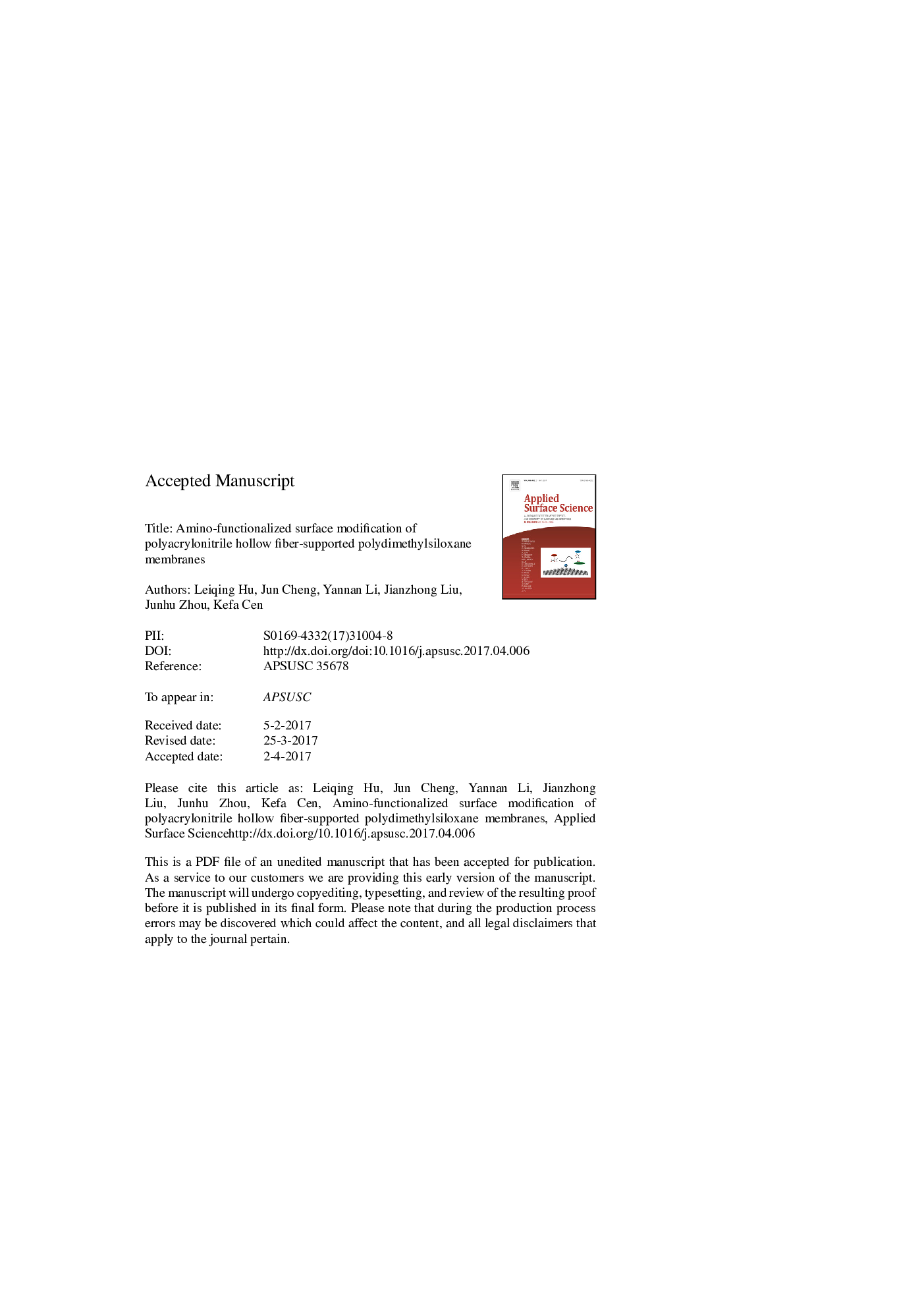| Article ID | Journal | Published Year | Pages | File Type |
|---|---|---|---|---|
| 5350936 | Applied Surface Science | 2017 | 17 Pages |
Abstract
This study aimed to improve surface polarity of polydimethylsiloxane (PDMS) membranes and provide surface active sites which were easy to react with other chemicals. 3-Aminopropyltriethoxysilane (APTES) containing an amino group was introduced into a PDMS membrane by crosslinking to prepare polyacrylonitrile hollow fiber-supported PDMS membranes with an amino-functionalized surface. Fourier transform infrared and X-ray photoelectron spectroscopic analyses proved the existence of APTES and its amino group in the PDMS membrane. The concentration of N atoms on the PDMS membrane surface reached â¼6% when the mass ratio of APTES/PDMS oligomer in the PDMS coating solution was increased to 4/3. The water contact angle decreased from â¼114° to â¼87.5°, indicating the improved surface polarization of the PDMS membrane. The density and swelling degree of the PDMS membrane decreased and increased, respectively, with increasing APTES content in PDMS. This phenomenon increased CO2 permeability and decreased CO2/H2 selectivity, CO2/CH4 selectivity, and CO2/N2 selectivity. When the mass ratio of APTES/PDMS oligomer was increased from 0 to 4/3, the CO2 permeation rate of the hollow fiber-supported PDMS membranes initially decreased from â¼2370 GPU to â¼860 GPU and then increased to â¼2000 GPU due to the change in coating solution viscosity.
Keywords
Related Topics
Physical Sciences and Engineering
Chemistry
Physical and Theoretical Chemistry
Authors
Leiqing Hu, Jun Cheng, Yannan Li, Jianzhong Liu, Junhu Zhou, Kefa Cen,
